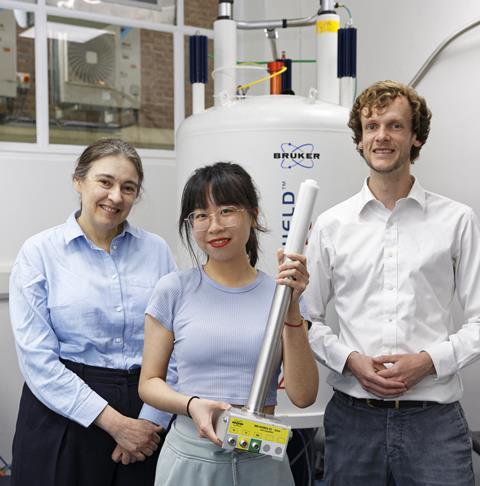Structural disorder increases the capacitance of carbon supercapacitor electrodes, according to new findings from a team of UK-based researchers. The discovery could lead to the development of supercapacitors that can store more charge.
Supercapacitors generally comprise porous electrodes soaked in an electrolyte. The most common and cheapest electrodes are made of activated carbon, which is itself composed of graphene-like sheets that form a porous network containing a range of pore sizes. When the electrode is charged, ions of opposite charge from the electrolyte are reversibly adsorbed into the pores and ions of like charge are expelled.
However, the factors governing the capacitance of a carbon supercapacitor electrode have remained unclear. Some research has suggested it increases as pore size shrinks, but more recent research has contradicted this. ‘These porous carbon electrodes are really hard to characterise because they have inherently non-crystalline structures,’ says materials chemist Alexander Forse from the University of Cambridge.
In 2013, as part of his PhD in Clare Grey’s group at Cambridge, Forse performed solid-state NMR on electrodes soaked with electrolytes. When the electrodes were prepared at lower temperatures, the adsorbed species showed lower chemical shifts. This showed that their nanoporous structures were chemically more disordered. ‘In this more recent study, Clare and I teamed up again to see “Is there a connection between this more disordered structure and the amount of energy you can store?”’ says Forse, now an assistant professor himself.
Pore size vs disorder
Researchers in Forse’s group led by his PhD student Xinyu Liu tested ten commercial nanoporous carbon electrodes from different suppliers in the standard commercial electrolyte tetraethylammonium tetrafluoroborate in acetonitrile. Five had very similar distributions of pore sizes, but their capacitance varied dramatically. When the researchers looked at the solid-state NMR spectra, they found that, when the chemical shift of the adsorbed species went down, the capacitance of the electrode went up. This was true irrespective of the adsorbed species, suggesting it was a property of the electrodes.

The researchers then annealed their most disordered carbon sample at a range of temperatures. They found that, the higher the annealing temperature, the higher the final chemical shifts and the lower the capacitance. The researchers are now working to understand the physical origin of the phenomenon. ‘We have evidence for the correlation but we can’t really say why a more disordered electrode is actually better,’ says Forse. They suspect it may be because increased localisation of charge at defects increases a surface’s local interaction with ions. The researchers then hope to use their discovery to design even higher-capacity electrodes.
Materials chemist Yury Gogotsi from Drexel University in Pennsylvania, US, says that researchers in his lab recognised an influence of disorder ‘over a dozen years ago’ when they were disappointed to find that high-temperature experiments that increased the specific surface area of carbide-derived carbon electrodes reduced their capacitance. However, he notes that until now there has been no real way to correlate disorder to capacitance and that the link with chemical shift shown in the NMR experiments is ‘a really important finding and the key to evaluating materials quantitatively’.